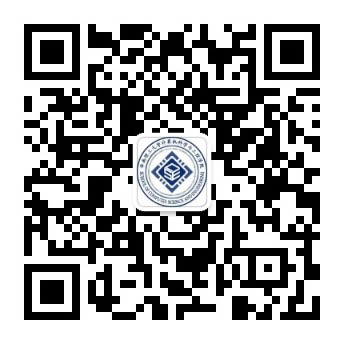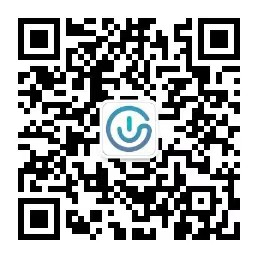《物联网技术》教学大纲
课程代码 | 045102671 |
课程名称 | 物联网技术 |
英文名称 | Internet of Things Technology |
课程类别 | 专业领域课 |
课程性质 | 选修 |
学时 | 总学时:32 上机学时: 0 实验学时:0 实践学时:0 |
学分 | 2 |
开课学期 | 第七学期 |
开课单位 | 计算机科学与工程学院 |
适用专业 | 计算机科学与技术专业、软件专业、信息安全专业 |
授课语言 | 中文授课 |
先修课程 | 嵌入式系统 |
毕业要求(专业培养能力) | 本课程对学生达到如下毕业要求有如下贡献: 1.工程知识:掌握扎实的基础知识、专业基本原理、方法和手段,能够将数学、本专业基础知识和物联网专业知识用于解决复杂工程问题,并接触和掌握物联网部分案例的实践经验,为解决行业应用的实际复杂问题打下知识基础。 2.问题分析:能够应用数学、本专业基本原理、方法和手段和物联网应用知识,识别、表达、并通过文献研究分析物联网工程中的复杂问题,以获得有效结论。 3.设计/开发解决方案:能够设计针对物联网工程复杂问题的解决方案,设计满足特定需求的物联网系统、节点(硬件部件)或软件系统,并能够在设计环节中体现创新意识,考虑社会、安全、法律、文化以及环境等因素。 4.研究:能够基于科学原理并采用科学方法对物联网工程复杂问题进行研究,包括设计实验、分析与解释数据、并通过信息综合得到合理有效的结论。 5.使用现代工具:能够针对物联网工程复杂问题,开发、选择与使用恰当的技术、资源、现代工程工具和信息技术工具,包括对物联网工程复杂问题的预测与模拟,并能够理解其局限性。 |
课程培养学生的能力(教学目标) | 完成课程后,学生将具备以下能力: (1)掌握物联网的基本原理和基本知识,培养学生发现问题、解决问题的基本能力。[1、2] (2)掌握物联网部署过程和调试维护过程的基本知识,学生具有安装、调试、维护物联网系统的初步能力。[1、3、4] (3)掌握常用的物联网设备(主要指节点、网关),并具有初步设计能力(主要指硬件选型和软件开发),培养学生的实践能力。[3、5] |
课程简介 | 本课程主要阐述物联网的概念、实现技术和典型应用。重点讨论物联网的基本概念、体系结构、软硬件平台系统组成、关键技术以及应用领域;课程将主要涉及感知识别技术,包括射频识别工作原理、RFID系统的基本组成及其典型应用、传感器及检测技术等;以及与物联网相关的通信与网络技术、传感网及其关键支撑技术等内容。学生将开展课堂与课外案例讨论,包括物联网中的数据融合、云计算技术、物联网应用系统的典型应用,使课程理论与实践紧密地结合起来。 |
教学内容与学时分配 | 第1章 信息技术、信息产业与物联网(4学时) 教学要求:掌握信息产业的发展规律;理解战略性新兴产业与物联网关系;了解未来物联网的发展与CPS研究计划 第2章 支撑物联网的信息技术(6学时) 教学要求: 了解以下基础知识: 1. 计算机技术:物联网的计算工具 2. 通信技术:物联网的通信工具 3. 嵌入式技术电路:物联网的基石 第3章 互联网:物联网的运行环境(2学时) 教学要求:掌握物联网的三网融合知识 第4章 无线传感器网络:物联网的末梢神经(4学时) 教学要求:掌握无线传感网理论与应用知识 第5章 数字地球、数字城市:物联网的空间信息支撑技术(4学时) 教学要求:数字地球、数字城市的研究与发展 第6章 射频标签:物联网的物品标识技术(4学时) 教学要求:掌握射频标签与自动识别技术;了解RFID技术的产业应用 第7章 数字家庭与智能家居:物联网的重要应用实例(4学时) 教学要求:了解物联网在数字家庭、智能交通等工、农业等领域应用 第8章 物联网中的信息安全技术:物联网安全的保障(4学时) 教学要求:了解RFID、无线传感网在信息安全上的应用与研究 |
实验教学(包括上机学时、实验学时、实践学时) | 无 |
教学方法 | 课程教学以课堂教学、综合讨论以及授课教师的科研项目案例教学等共同实施。 |
考核方式 | 本课程注重过程考核,成绩比例为: 平时课堂表现:30% 期末考试(课程报告):70% |
教材及参考书 | 现用教材: 陈以农 陈文智 韩德强《计算机科学与工程导论——基于IoT和机器人的可视化编程实践方法》机械工业出版社-华章分社 2017年 主要参考资料 1】Jean-Philippe Vasseur、Adam Dunkels等著、田辉译,《基于IP的物联网架构技术与应用》,人民邮电出版社,2011年。 2】www.rfidworld.com.cn RFID世界网 3】张新程、付航、李天璞、徐露著,《物联网关键技术》,人民邮电出版社,2011年。 4】周洪波著,物联网:技术、应用、标准和商业模式(第2版) ,电子工业出版社 2011年 |
制定人及制定时间 |
“CourseTitle” Syllabus
Course Code | 045102671 |
Course Title | Internet of Things Technology |
Course Category | Specialty-related Course |
Course Nature | Elective Course |
Class Hours | Total Hours: 32 on Board Hours: 0 Experimental Hours: 0 Practical Hours: 0 |
Credits | 2 |
Semester | Seventh Semester |
Institute | School of Computer Science & Engineering |
Program Oriented | Computer Science and Technology Major; Software Major; Information Security Major |
Teaching Language | Chinese |
Prerequisites | Embedded System |
Student Outcomes (Special Training Ability) | This course contributes to the following graduation requirements for students:
principle, methods and means of professional solid, and with the help of mathematics, the professional knowledge and professional networking knowledge to solve complex engineering problems, and contact and grasp things some practice experience, to lay the foundation for practical knowledge solve complex problems in industry Application.
methods and means, and the Internet of things knowledge, it can identify, express, and analyze complex problems in the Internet of things through literature research, so as to get effective conclusions.
for networking problems, designed to meet the specific needs of networking systems, nodes (hardware components) or software system, and can reflect the sense of innovation in the design process, taking into account social security, legal, cultural and environmental factors.
problems of Internet of things can be studied, including designing experiments, analyzing and interpreting data, and getting reasonable and valid conclusions through information synthesis. 5. Use modern tools: For networking complex engineering problems, it is possible to develop, select and use a appropriate technologies, resources, modern engineering tools and information technology tools, including predictions and simulations of complex problems in the Internet of Things, and to understand its limitations. |
Teaching Objectives | Upon completion of the course, students will have the following abilities:
cultivate the basic ability of students to find problems and solve problems. [1, 2]
and the process of debugging and maintenance. Students have the ability to install, debug and maintain the Internet of things system. [1, 3, 4]
gateway), and have preliminary design capabilities (mainly refers to hardware selection and software development), to train students' practical ability. [3, 5] |
Course Description | This course focuses on the concept of Internet of things, implementation technology and typical applications. Focus on the basic concept of IOT, system structure, software and hardware platform of the system composition, key technology and application field; course will mainly involve the perception of recognition technology, including the basic working principle of radio frequency identification, RFID system and its typical application, sensor and detection technology; and related networking, communication and network technology the sensor network and the key technologies etc.. Students will carry out classroom and extracurricular case discussions, including data integration in the Internet of things, cloud computing technology, and typical applications of the Internet of things application system, so that curriculum theory and practice are closely integrated. |
Teaching Content and Class Hours Distribution | Chapter 1: Information technology, Information industry and the Internet of things (4 hours) Teaching requirements: Mastering the law of development of information industry, understanding the relationship between strategic emerging industries and Internet of things, and understanding the future development of Internet of things and CPS research plan Chapter 2: Information Technology for Supporting Internet of Things (6 hours) Teaching requirements: Understand the basics:
Chapter 3: Internet: Internet of Things Operating Environment (2 hours) Teaching requirements: Mastering the triple play knowledge of Internet of things. Chapter 4: Wireless Sensor Networks: the Peripheral Nerve of the Internet of Things (4 hours) Teaching requirements: Master the theory and application knowledge of Wireless Sensor Networks. Chapter 5: Digital Earth and Digital City: Spatial Information Support Technology of Internet of Things (4 hours) Teaching requirements: Research and development of digital earth and digital city. Chapter 6: Radio Tag: Item Identification Technology of Internet of Things (4 hours) Teaching requirements: Master radio tag and automatic identification technology, understand the industrial application of RFID Technology. Chapter 7: Digital Home and Smart Home: an Important Application Example of Internet of Things (4 hours) Teaching requirements: Understand the Internet of things in the digital home, intelligent transportation and industries, agriculture and other fields of application Chapter 8: Information Security Technology in Internet of Things: Security of Internet of things (4 hours) Teaching requirements: Understand the application and research of RFID and wireless sensor network in information security. |
Experimental Teaching | Not |
Teaching Method | The course teaching is carried out by classroom teaching, comprehensive discussion and teaching teacher’s scientific research projects case teaching and so on. |
Examination Method | This course focuses on process assessment, and the achievement ratio is: Classroom performance: 30% Final exam (course report): 70% |
Teaching Materials and Reference Books | Present textbook: Yinong Chen, Wenzhi Chen, Deqiang Han. Introduction to Computer Science and Engineering - Visual Programming Practice on IoT and Robot. Machinery Industry Press - Huazhang Branch, 2017. The main reference material: 【1】Jean-Philippe Vasseur, Adam Dunkels, Huiyi Tian. Architecture Technology and application of Internet of things based on IP. People’s Posts and Telecommunications Press, 2011. 【2】www.rfidworld.com.cn. RFID World Network 【3】Xincheng Zhang, Hang Fu, Tianpu Li, Lu Xu. Key Technologies of Internet of Things. People’s Posts and Telecommunications Press, 2011. 【4】Hongbo Zhou. Internet of Things: Technology, Application, Standards and Business Models (2nd Edition). Electronic Industry Press, 2011. |
Prepared by Whom and When | Xiaozheng Lai July 17, 2017 |



